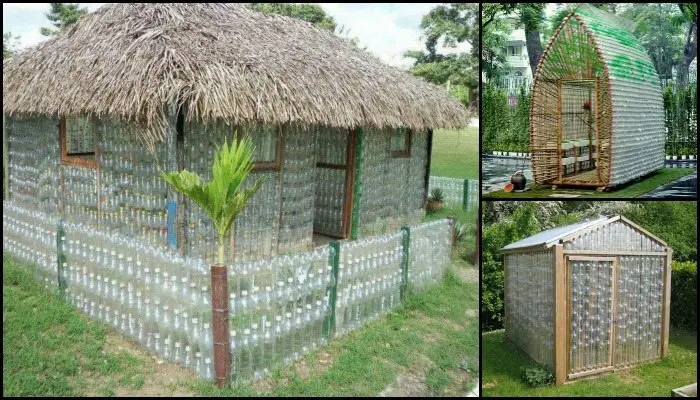Want to have a small greenhouse in your yard to grow some veggies? Then use plastic bottles to build one! Not only are you keeping construction expenses to a minimum, but you are also helping save the environment.
To build a large-sized plastic bottle greenhouse, you’ll need around 1,500 pieces of 2-liter plastic bottles. Can you imagine how much waste you’re already keeping away from nature with just a single greenhouse project? It surely is a great recycling idea for plastic bottles!
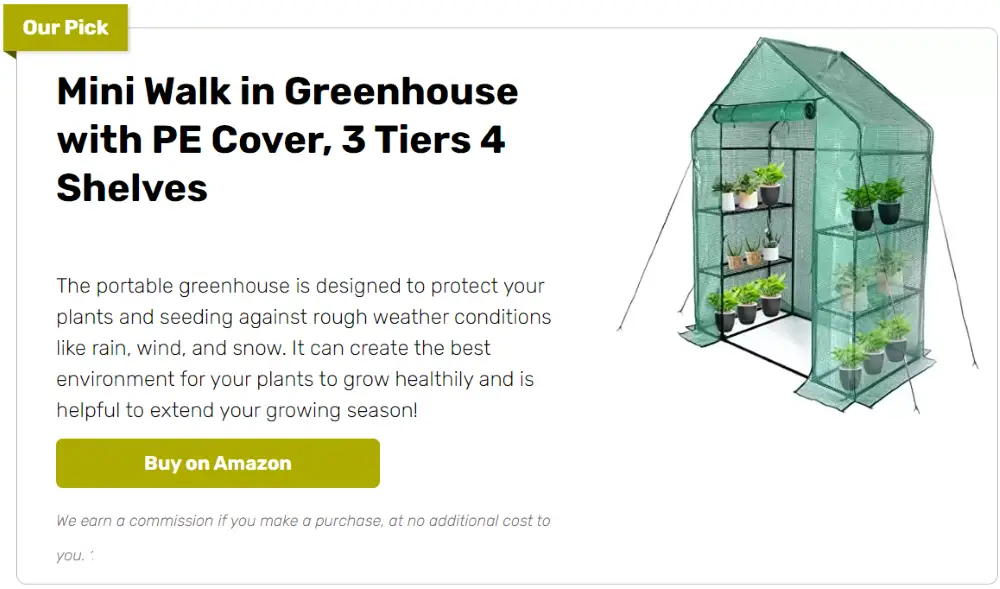
Now it might not look like a very strong and effective structure to some, but many DIY-ers have already built their own plastic bottle greenhouse. And still, this project is continually being shared by different people and organizations in their community. Now that’s a good sign that this idea definitely works in many places around the world!
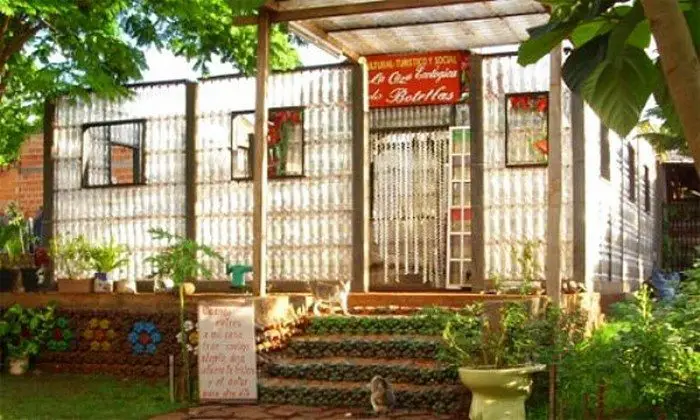
If you think this greenhouse idea is perfect for you, then it’s time to collect all those plastic bottles that you will need.
Contents
Building a Plastic Bottle Greenhouse
Materials
- 1,500 Plastic Bottles (ideally 2-liter bottles)
- 4 x 4″ treated Posts
- 2 x 2″ treated Timber
- Garden Canes
- Cement Mix
- 4″ and 3″ Screws
- Fencing Staples
- Gravel, Slabs, Mulch Matting
- Bucket
- Soap
- Water
- Hinges
Tools
- Measuring Tape
- Scissors
- Trowel
- Hammer
- Cordless Drill
- Spirit Level
- Mitre Block
- Spade
- Pinch Bar
- Step Ladder
Instructions
Step 1: Prepare the Bottles
- Collect enough plastic bottles to cover the planned size of your greenhouse. Clean them thoroughly using soap and water to remove any labels and residue. Allow them to dry.
Step 2: Prepare the Site
- Choose a flat area for your greenhouse. Clear the site of any debris or vegetation.
- Use the spade to level the ground. Lay down gravel or slabs for a stable and level foundation.
Step 3: Build the Frame
- Measure and cut the 4 x 4-inch posts for the corners of the greenhouse. These will serve as the main support structure.
- Dig holes for the posts, deep enough to provide stability (usually about 2-3 feet). Use the spirit level to ensure they are vertical.
- Mix the cement according to the package instructions and use it to secure the posts in place. Allow the cement to cure as directed.
Step 4: Construct the Framework
- Measure and cut the 2 x 2-inch timbers to create the roof and wall frames. Attach these to the posts using the cordless drill and screws.
- Ensure everything is squared and level with the spirit level.
Step 5: Assemble the Bottle Walls
- Cut the bottoms off of each plastic bottle using scissors.
- Slide the bottles over each other to form long chains, securing each with fencing staples or durable tape.
- Attach these chains to the timber frame, starting from the bottom and working your way up. Overlap the rows to ensure no gaps.
Step 6: Install the Roof
- Create a sloped roof using additional 2 x 2-inch timber, ensuring it has enough incline to prevent water accumulation.
- Cover the roof frame with a layer of plastic bottles or a suitable transparent material like a heavy-duty plastic sheeting. Secure it with screws and hinges for easy access.
Step 7: Final Touches
- Use mulch matting around the base of the greenhouse to suppress weeds and retain moisture.
- Install a door using additional timber and hinges for easy access.
Step 8: Check and Maintain
- Regularly inspect your greenhouse for any structural issues or gaps in the bottle walls. Replace any damaged bottles as needed.
- Ensure that the interior remains clean and that the water drainage is functioning properly.
Click on any image to start the lightbox display. Use your Esc key to close the lightbox.![]()
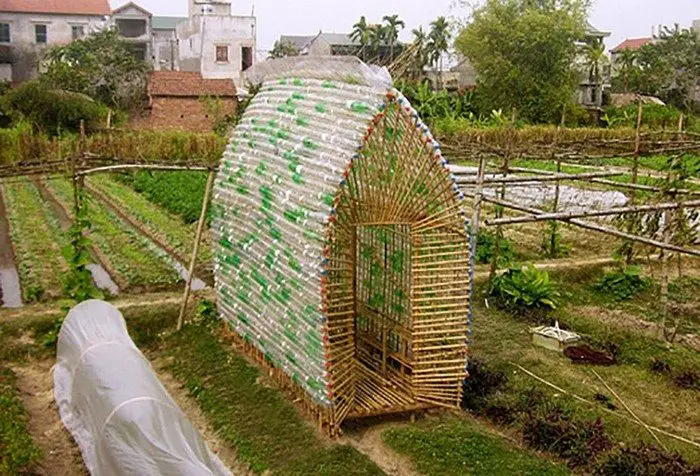
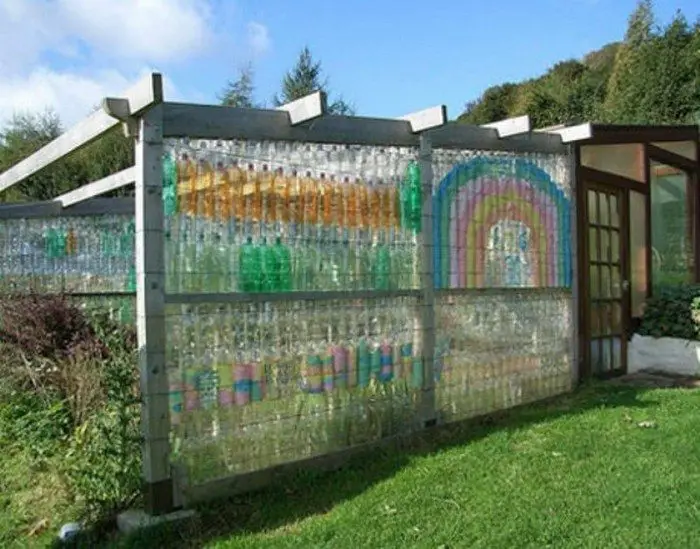


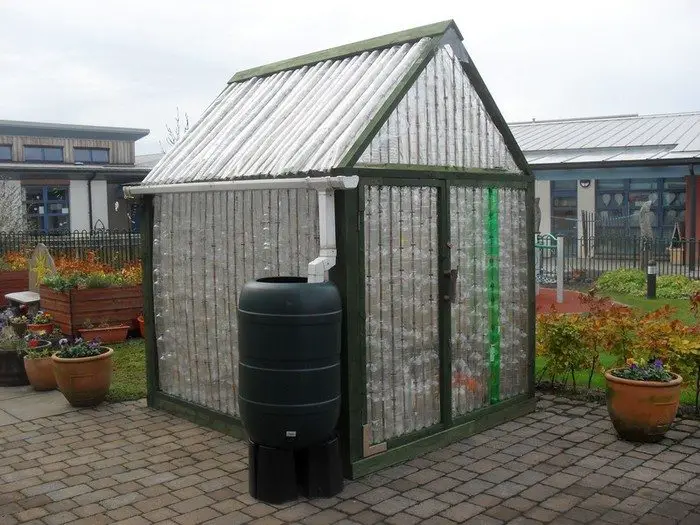



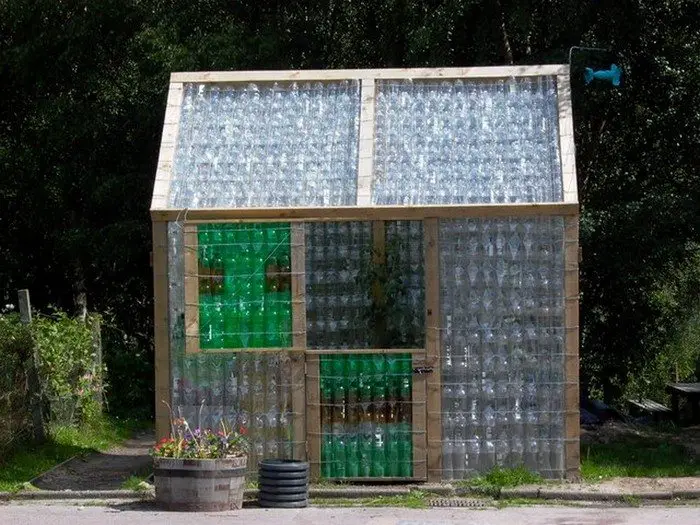


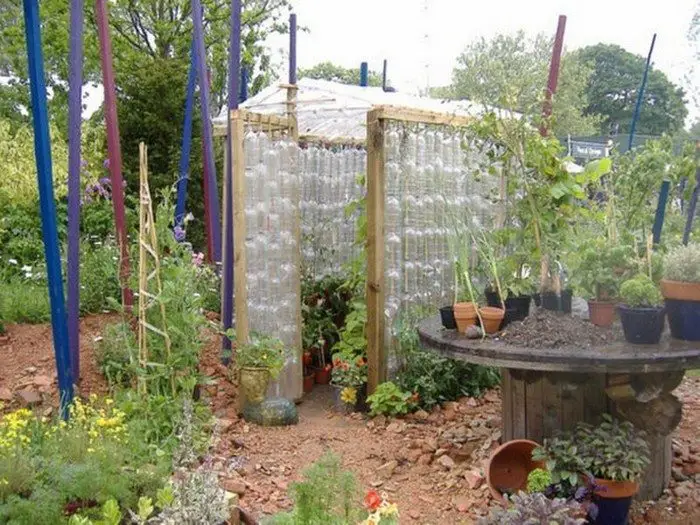
Design Variations for Different Climates
Creating a plastic bottle greenhouse is a sustainable and cost-effective way to extend the growing season for your garden. However, different climates require specific design adjustments to optimize the environment inside the greenhouse.
Here, we explore how you can adapt the basic design of a plastic bottle greenhouse to various weather conditions, ensuring that it remains functional and efficient regardless of the external climate.
Insulation
In colder regions, insulation is crucial to keep the heat inside the plastic bottle greenhouse. Double-wall construction can be achieved by using two layers of plastic bottles with an air gap in between, providing a buffer against the cold. Additionally, transparent bubble wrap can be used inside for extra insulation without compromising light entry.
Snow Load
The roof design in a plastic bottle greenhouse needs to withstand snow accumulation. A steep roof pitch not only helps in shedding snow but also maximizes sunlight during the shorter winter days. Reinforcing the structure with additional timber beams will ensure it can bear the weight of the snow.
Ventilation
Moderate climates still require careful temperature management to prevent overheating during sunny days. Implementing adjustable vents or windows in the plastic bottle greenhouse can help regulate temperature. These can be placed at both the lower and upper parts of the structure to create effective cross-ventilation.
Rainwater Management
In areas with significant rainfall, the plastic bottle greenhouse should have a gutter system to manage runoff. This not only protects the structure’s foundation from water damage but also allows the collection of rainwater for irrigation purposes.
Shading
In hot and dry climates, preventing the plastic bottle greenhouse from becoming too hot is essential. External shade cloths or internal blinds can reduce the amount of sunlight hitting the bottles, thus lowering the internal temperature. These shades can be rolled up or removed during cooler days or seasons.
Cooling Systems
For extremely hot climates, consider installing a basic evaporative cooler or using a fan system. This will help in maintaining a cooler temperature inside the plastic bottle greenhouse, making it viable even during intense heat waves.
High Humidity Management
In tropical climates, managing internal humidity is crucial to prevent the growth of mold and mildew in the plastic bottle greenhouse. Vents at the roof peak, along with screened openings, can improve air circulation and reduce moisture buildup.
Sturdy Construction
Frequent storms mean the plastic bottle greenhouse needs to be robust. Secure anchoring of the posts in deep concrete footings and the use of heavy-duty framing materials will help withstand high winds and heavy rains.
By adapting the design of your plastic bottle greenhouse according to these guidelines, you can create a durable and efficient growing space that suits your local climate, making your gardening project a success year-round.
Benefits of Greenhouses for Home Gardening
Greenhouses offer a versatile solution for home gardeners, allowing them to extend the growing season and cultivate a wider variety of plants, regardless of their local climate. By providing a controlled environment, greenhouses can significantly enhance the productivity and health of your garden.
Here are some key benefits of integrating a greenhouse into your home gardening setup.
Year-Round Gardening
A greenhouse creates a microclimate that shields plants from harsh external weather conditions. This allows gardeners to start their growing season earlier and extend it later into the fall or even through the winter, depending on the level of temperature control within the greenhouse.
Shielding Plants
Greenhouses protect plants from extreme weather such as strong winds, heavy rain, and unexpected temperature dips. This protection helps prevent physical damage to plants and reduces the risk of soil erosion around the plant roots.
Reduced Pest Interference
By providing a barrier between outdoor pests and your plants, a greenhouse makes it easier to manage unwanted insects and animals. This can significantly reduce the need for chemical pesticides, leading to healthier plants and a more organic garden.
Controlled Environment
Gardeners can control temperature, humidity, and light exposure inside a greenhouse, tailoring conditions to the needs of specific plants. This can be particularly beneficial for growing exotic or specialty plants that would not typically thrive in the local outdoor climate.
Diverse Plant Options
With the ability to manipulate and maintain specific environmental conditions, greenhouses allow gardeners to experiment with plant varieties that are not native to their area. This diversity can enrich the gardening experience and offer more culinary or aesthetic plant options.
Water and Nutrient Management
Greenhouses facilitate more efficient use of water and nutrients. The enclosed space minimizes water evaporation and runoff, and soil in greenhouses typically requires less frequent fertilization. This leads to more sustainable gardening practices and can help lower maintenance costs.
Learning Environment
For families with children or for novice gardeners, greenhouses serve as a fantastic educational tool. They provide a hands-on way to teach about botany, ecology, and the importance of environmental stewardship.
Integrating a plastic bottle greenhouse into your home gardening practice not only enhances the beauty and yield of your garden but also contributes to a more sustainable and environmentally friendly gardening approach. Whether you are a seasoned gardener or just starting out, the benefits of owning a greenhouse are substantial and rewarding.
Conclusion
Building a plastic bottle greenhouse combines useful gardening with sustainability in a fulfilling project. Reusing resources and cutting waste allows gardeners to design a special area that promotes plant development all year round, rain or shine. Along with improving the look and use of your garden, this project is a great teaching tool for recycling and conservation. In the end, your love of gardening and the environment both gain from a plastic bottle greenhouse.

